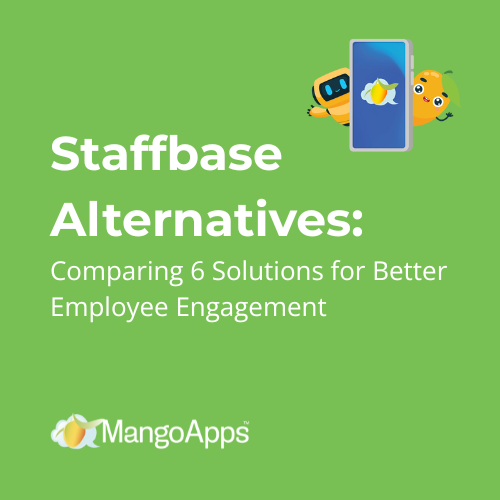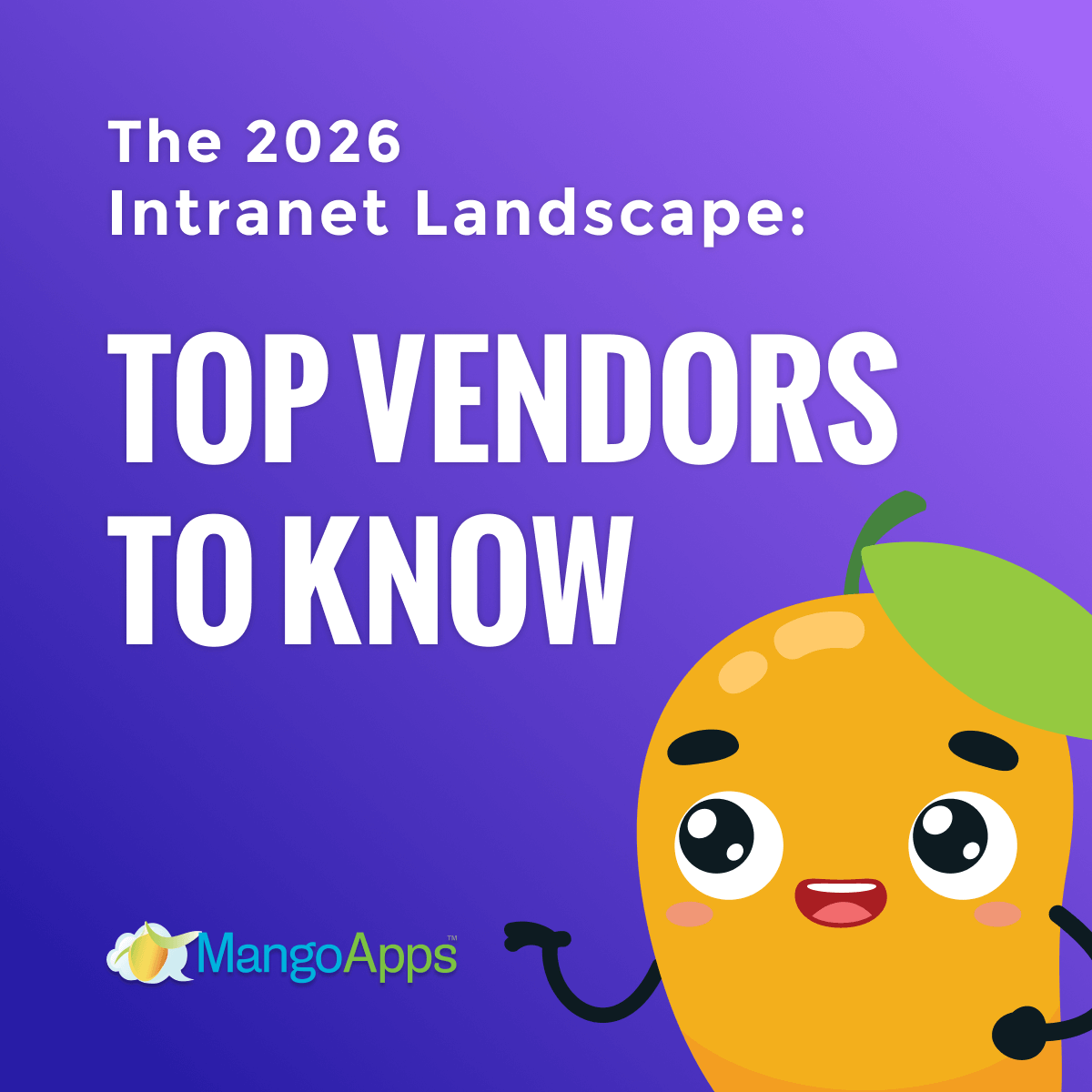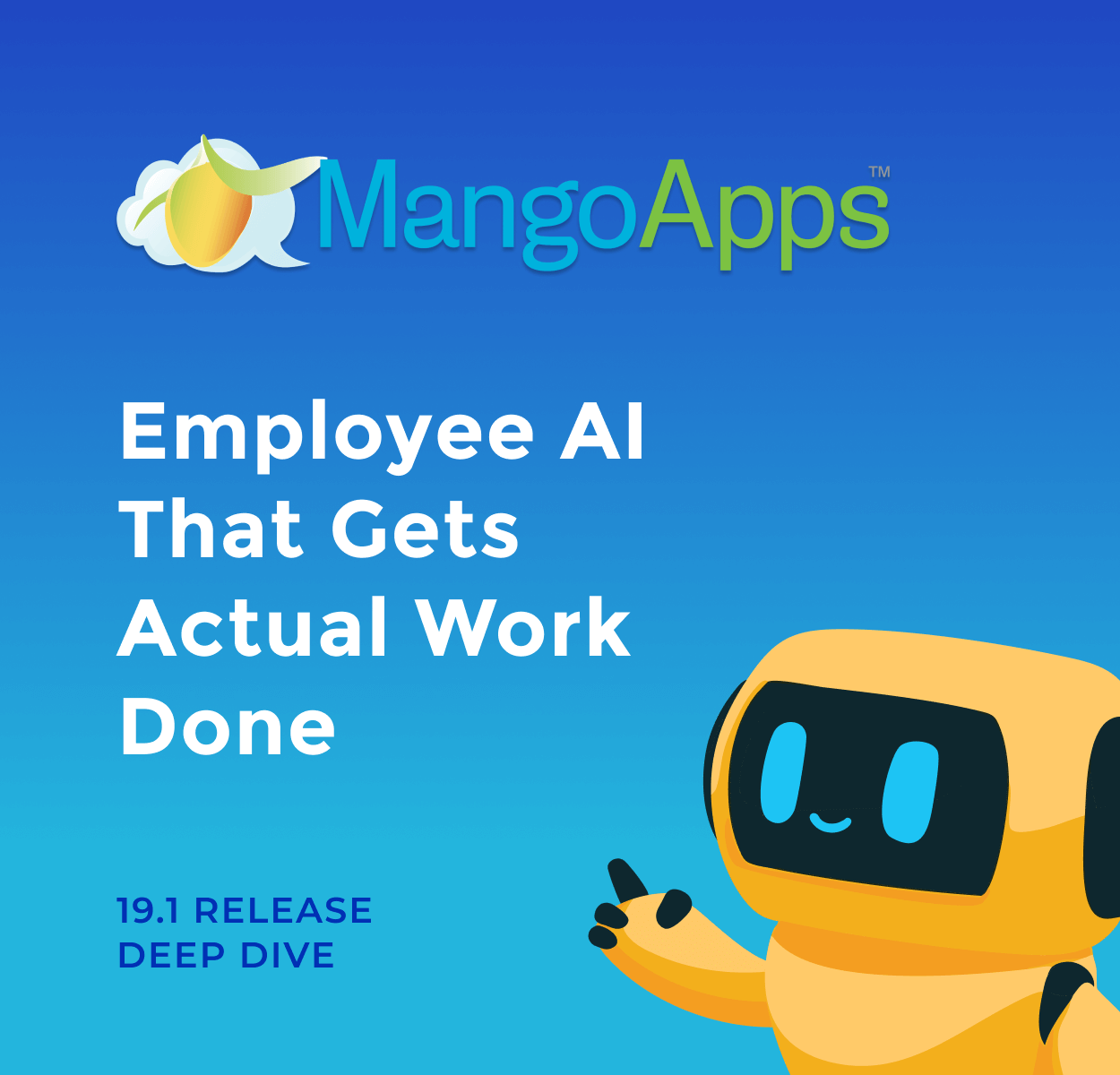
In 2025, the search for better employee experience platforms has never been more urgent. As organizations adapt to hybrid and distributed work, legacy tools like Workvivo often fall short of the flexibility, depth, and integration modern enterprises require. From limited customization and siloed data to weak frontline access, companies are now seeking unified solutions that truly connect every employee — whether at a desk, on the floor, or in the field.
This guide explores seven leading Workvivo alternatives that go beyond communication feeds and engagement widgets. Each combines scalability, integration, and intelligent automation to support the evolving workforce and deliver measurable outcomes in productivity, retention, and employee satisfaction.
Why Organizations Are Searching for Workvivo Alternatives
Companies are realizing that engagement tools alone are not enough. They need systems that simplify work, not add complexity. According to Gallup’s State of the Global Workplace 2024, only 27% of managers are engaged, and global disengagement costs firms nearly $9.6 trillion in lost productivity—about 9% of global GDP. This disengagement is especially acute among frontline workers, who make up roughly 80% of the global workforce but are rarely prioritized in digital transformation efforts (Emergence Capital).

Common pain points driving platform migration include:
- Fragmented tools: The average employee switches between 35 apps and toggles screens over 1,100 times a day, draining focus and energy (TechRepublic).
- Integration gaps: Legacy systems fail to connect with Microsoft 365, Google Workspace, or HRIS platforms, leading to data silos and duplication.
- Frontline disconnect: Deskless teams lack equal access to company information, which drives turnover as high as 74% in sectors like hospitality and transportation (Deloitte).
- High attrition costs: Replacing a frontline employee can cost up to 40% of annual salary, and for managers, up to 200% (Gallup).
Research consistently shows that organizations that unify communication, knowledge, and workflow management see a 20–25% productivity lift and 10–15 percentage-point improvement in frontline retention (JLL).
Key Factors for Evaluating Workvivo Alternatives
Selecting the right employee experience platform requires more than comparing feature lists. The decision should reflect how well each solution supports business goals, connects distributed teams, and adapts to change.
1. Mobile Accessibility
For enterprises with deskless workers, mobile-first design is non-negotiable. Healthy intranet adoption rates hover between 60–70% weekly, while best-in-class implementations achieve 85%+ usage (Social Edge Consulting, 2025 Intranet Benchmark). A responsive app that delivers updates, tools, and self-service access keeps everyone informed and aligned.
2. Integration Ecosystem
The best platforms integrate seamlessly with collaboration suites like Microsoft 365 and Google Workspace, along with HR and payroll systems. MangoApps, LumApps, and Staffbase all offer 200+ prebuilt connectors that reduce IT overhead and enhance data continuity.
3. AI and Automation
Modern intranets are evolving into AI-powered digital assistants. Intelligent search, automated workflows, and content generation capabilities improve engagement and drastically cut wasted time. A good benchmark: intranet search success rates above 75% (Social Edge Consulting).
4. Customization & Governance
Organizations need to adapt branding, permissions, and governance workflows to reflect their structure. Strong editorial and compliance controls also ensure communication remains consistent and trustworthy across departments.
5. Analytics & Insights
Finally, engagement analytics and sentiment tracking turn communication from guesswork into strategy. Real-time dashboards reveal which content resonates, where engagement drops, and how teams interact across locations.
7 Leading Workvivo Alternatives for Enhanced Employee Experience
Each of the following platforms offers a distinct approach to building connected, informed, and high-performing teams. Below is a quick comparison before we explore each in depth.

1. MangoApps — Unified AI-Powered Employee Platform

MangoApps stands out as the AI-powered employee platform that unifies intranet, modern HCM, and workforce management in one experience. Built for both office and frontline workers, it offers communication, collaboration, scheduling, and learning within a single, governed environment.
Key strengths include:
- AI-powered search and Assistants that answer questions, automate workflows, and personalize updates.
- Mango Employee AI, which delivers contextual insights and automates repetitive HR and operations tasks.
- Enterprise-grade security (HITRUST, ISO 27001, SOC 2, FedRAMP).
- Rapid deployment, with low IT overhead and strong mobile accessibility.
Organizations adopting MangoApps report faster time-to-answer, fewer support tickets, and 90%+ intranet adoption rates. For companies seeking a single source of truth across communication and operations, MangoApps is the most comprehensive alternative to Workvivo.
Compare MangoApps vs. Workvivo here.
2. Staffbase

Staffbase focuses on enterprise-level internal communications. It offers omnichannel content delivery across web, email, mobile, and digital signage, enabling corporate messaging to reach all employees simultaneously.
Strengths include a built-in editorial planning suite, sentiment analytics, and seamless Microsoft 365 integration. Staffbase is ideal for large organizations where communications are centralized but content workflows need structure and governance.
However, Staffbase remains more focused on publishing and communication, lacking deeper workflow and operational management tools for frontline use.
See a more detailed comparison of MangoApps vs. Staffbase here.
3. Simpplr

Simpplr is known for its sleek, user-friendly intranet design and strong personalization engine. Its AI capabilities tailor news feeds and search results by role, department, and behavior, increasing relevance and adoption.
Simpplr’s Salesforce integration is a differentiator for companies already using Salesforce as a collaboration backbone. However, it offers less flexibility for operations-heavy environments and relies heavily on external systems for workforce management.
Best suited for organizations prioritizing modern user experience and engagement metrics.
See more about how MangoApps compares with Simpplr here.
4. Microsoft Viva Engage

Microsoft Viva Engage extends the Microsoft ecosystem with integrated communication and collaboration capabilities. Its core advantage lies in native Teams integration, allowing employees to connect and collaborate without switching tools.
For organizations already invested in Microsoft 365, Viva Engage offers a unified, secure experience. However, it has limited customization beyond Microsoft’s suite and may require additional licensing to achieve parity with standalone intranet platforms.
See how MangoApps compares with Microsoft Viva here.
5. LumApps

LumApps combines social intranet features with robust Google Workspace integration, making it a preferred choice for global organizations with strong Google adoption. It supports multilingual content, localized news feeds, and advanced governance tools for compliance-heavy industries.
Its personalization and content management strengths make it a powerful alternative to Workvivo, though its learning and task management features are less developed. LumApps excels for enterprises prioritizing communication consistency and brand-aligned experiences across regions.
Learn more about how MangoApps compares with LumApps here.
6. Blink
%252520(1).png)
Blink takes a mobile-first approach to employee communication, built specifically for deskless and shift-based teams. Its app simplifies access to schedules, announcements, and documents, ensuring high adoption rates among frontline users.
While Blink is highly intuitive, it focuses more on communication than analytics or knowledge management. Organizations seeking simplicity and quick deployment will find Blink a strong fit, but enterprises requiring deep data governance or workflow automation may outgrow it.
7. Beekeeper

Beekeeper positions itself as a secure operational communication platform designed for compliance-sensitive industries. It features GDPR-compliant messaging, integration with shift scheduling tools, and built-in training modules.
Beekeeper recently merged with LumApps, forming a combined entity that aims to unify their communication and intranet capabilities. However, it remains unclear how the two products will integrate and interoperate in the coming months. Analysts caution that customers should closely monitor how service levels evolve under the merged organization, as well as how the roadmap for innovation and feature development will be prioritized.
Beekeeper is best suited for sectors like healthcare, logistics, and manufacturing, where data privacy, multilingual communication, and mobile accessibility are critical. Its operational depth makes it an ideal replacement for Workvivo in heavily regulated environments.
Read more about howMangoApps compares against Beekeeper here.
Choosing the Right Workvivo Alternative
Selecting the right platform depends on your organization’s priorities. Consider these dimensions:
- Integration considerations: Which tools best align with your existing stack (Microsoft 365, Google Workspace, HRIS)?
- Feature priorities: Is your focus communication, collaboration, or operational automation?
- Scalability factors: Does the platform support multi-region governance and language localization?
- Implementation timeline: SaaS deployment speed varies — MangoApps can go live in under 90 days, while others require 4–6 months.
Unified platforms like MangoApps consistently outperform point solutions. Studies by IDC and Gallup show that integrated digital experiences correlate with 25% higher productivity and 43% lower turnover.
Read more comparisons of MangoApps against additional vendors here.
Improving Employee Experience in 2025: Your Next Steps
The era of siloed intranets is ending. As AI reshapes how employees connect, learn, and perform, the best employee experience platforms combine intelligence, integration, and inclusivity.
Action plan:
- Assess your needs — Identify current pain points and quantify their impact.
- Prioritize outcomes — Rank engagement, retention, and operational efficiency by business impact.
- Request demonstrations — See how each platform fits your workflows and workforce composition.
- Pilot before rollout — Test with representative teams and track adoption, satisfaction, and time-to-answer metrics.
For enterprises ready to move beyond fragmented tools, MangoApps offers a single, AI-powered employee platform that unites intranet, HCM, and workforce management into one experience.
Schedule a demo to see how MangoApps can help your organization build a connected, informed, and engaged workforce in 2025.
Frequently Asked Questions About Workvivo
1. What are the main differences between MangoApps and Workvivo?
MangoApps offers a unified platform that integrates intranet, HCM, and workforce management with AI-powered automation and insights. Workvivo, by contrast, focuses primarily on employee communication and engagement. MangoApps’ broader capabilities make it better suited for organizations seeking to connect communications with daily workflows.
2. Is Workvivo still a good option for smaller organizations?
Yes, Workvivo remains a viable choice for small to midsize businesses that need a simple communication hub. However, companies with complex integration or compliance requirements may quickly outgrow its limited customization and scalability.
3. What’s the significance of the Beekeeper–LumApps merger?
The merger aims to bring together LumApps’ intranet expertise and Beekeeper’s frontline communication strengths. That said, it is still unclear how the platforms will integrate, how customer service will be managed, and how innovation roadmaps will be prioritized. Organizations evaluating either platform should monitor post-merger developments closely.
4. How do AI-powered intranets improve employee experience?
AI-driven systems help employees find information faster, personalize content delivery, automate routine workflows, and provide leaders with actionable insights on engagement and performance. This reduces wasted time and enhances the sense of connection and productivity.
5. What is the average implementation time for these platforms?
Implementation varies widely. MangoApps can deploy in under 90 days with minimal IT overhead. Larger systems like Staffbase or LumApps typically require 4–6 months for full rollout, depending on integration depth and governance needs.
6. Which Workvivo alternative is best for frontline workers?
Platforms like MangoApps, Blink, and Beekeeper are particularly strong for frontline engagement due to mobile-first design, multilingual support, and task accessibility. MangoApps stands out for providing a single hub for communication, scheduling, and training.
7. How should organizations measure success after implementation?
Success metrics typically include adoption rate (target 70–85%), content engagement, search success rate (>75%), employee satisfaction (≥4.2/5), and reductions in turnover or app sprawl. Tracking these KPIs over time helps justify ROI and guide ongoing optimization.










